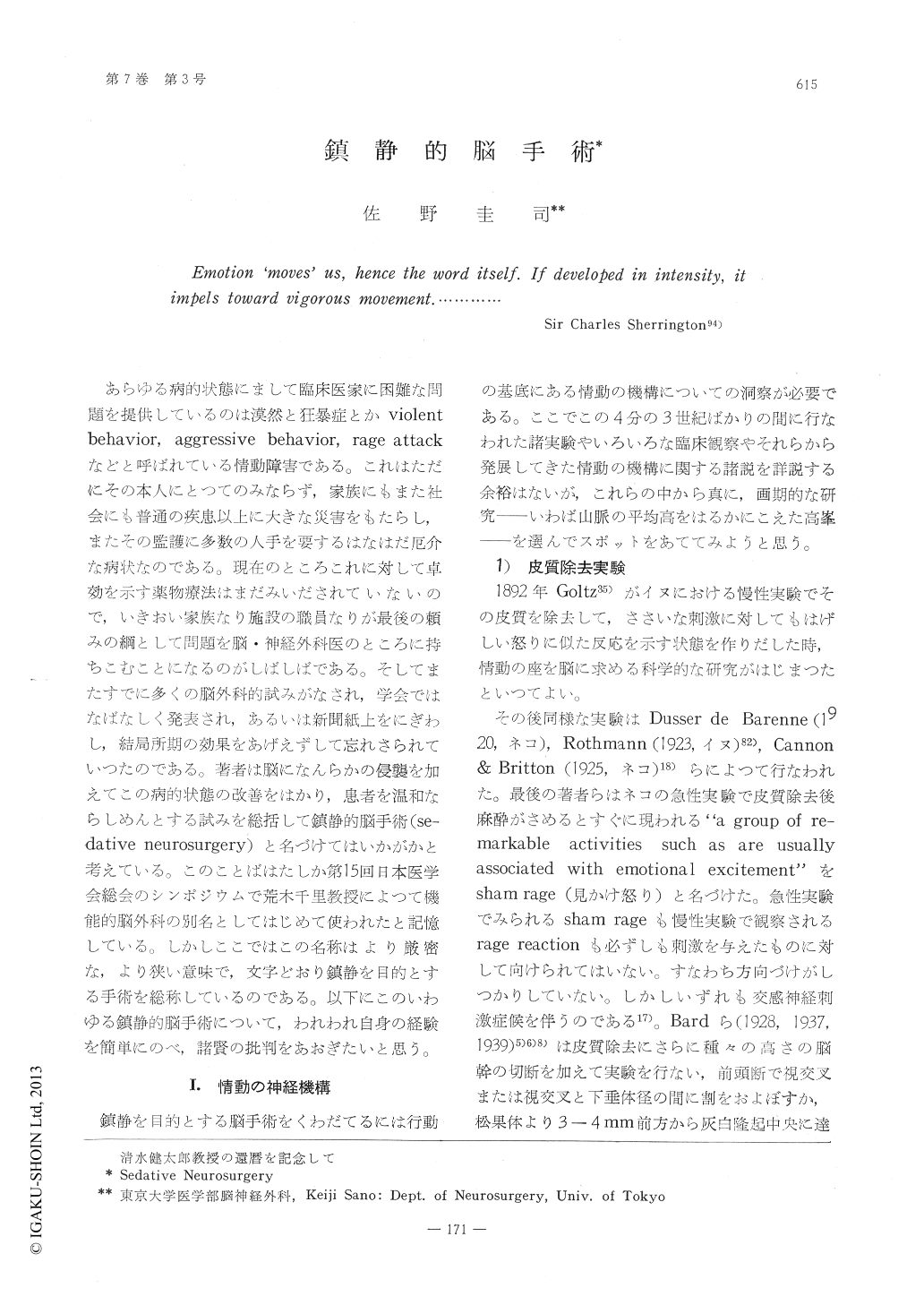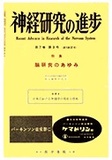Japanese
English
- 有料閲覧
- Abstract 文献概要
- 1ページ目 Look Inside
あらゆる病的状態にまして臨床医家に困難な問題を提供しているのは漠然と狂暴症とかviolentbehavior,aggressive behavior,rage attackなどと呼ばれている情動障害である。これはただにその本人にとつてのみならず,家族にもまた社会にも普通の疾患以上に大きな災害をもたらし,またその監護に多数の人手を要するはなはだ厄介な病状なのである。現在のところこれに対して卓効を示す薬物療法はまだみいだされていないので,いきおい家族なり施設の職員なりが最後の頼みの綱として問題を脳・神経外科医のところに持ちこむことになるのがしばしばである。そしてまたすでに多くの脳外科的試みがなされ,学会ではなげなしく発表され,あるいは新聞紙上をにぎわし,結局所期の効果をあげえずして忘れさられていったのである。著者は脳になんらかの侵襲を加えてこの病的状態の改善をはかり,患者を温和ならしめんとする試みを総括して鎮静的脳手術(sedative neurosurgery)と名づけてはいかがかと考えている。このことばはたしか第15回日本医学会総会のシンポジウムで荒木千里教授によつて機能的脳外科の別名としてはじめて使われたと記憶している。しかしここではこの名称はより厳密な,より狭い意味で,文字どおり鎮静を目的とする手術を総称しているのである。
Disorders of emotion as manifested in aggressive behaviors or rage attacks are most difficult to handle from medical as well as social points of view. In order to calm or correct those patients, the author has performed anterior cingulectomy (removal of the area LA or 24), thalamotomy (thalamolaminotomy, that is, cutting the internal medullary lamina to separatemedial and lateral thalamic nuclei, or stereotaxic anterior thalamotomy), fornicotomy (section of the fornix by transcallosal approach or stereotaxic electrocoagulation of the fornix) and upper mesencephalic reticulotomy (stereotaxic electrocoagulation of the most rostral part of the mesencephalic reticular formation around the aqueduct) in these ten years or more. Long-lasting sedative effects have been noted in only 62% of the cases undergone these procedures.
Dissatisfied with the results, the author recently started what he calls porterior hypothalamotomy, namely stereotaxic electrocoagulation of the ergotropic zone of the hypothalamus. The lesion was estimated 5-5.5mm. in diameter and was located in the area 1-3mm. (not more than 3mm.) lateral to the wall of the third ventricle in the anteroposterior view, and in the triangular area bounded by the lines connecting the m idpoint of the AC-PC line the rostral pole of the mammillary bodyand the rostral end of the aqueduct in the lateral view. Electrical stimulation of the area caused marked elevation of blood pressure, tachycardia and pupillary dilatation, often with flushing of the face.
After the bilateral procedure, the patients have become remarkably calm, placid, passive and obedient. Temporary somnolence was noted, in about a week, after the procedure. There was a tendency to increase of parasympathicotonia or decrease of sympathicotonia; goose flesh, dermographism and occasionally cataleptic states were observed temporarily (for a few days), after the operation. Sedative effects of this posterior hypothalamotomy are pronounced more than those of any other procedures. Final evaluation will, however, need further study.
Theories and experiments concerning the neural mechanism of emotion were reviewed and discussed.

Copyright © 1963, Igaku-Shoin Ltd. All rights reserved.


